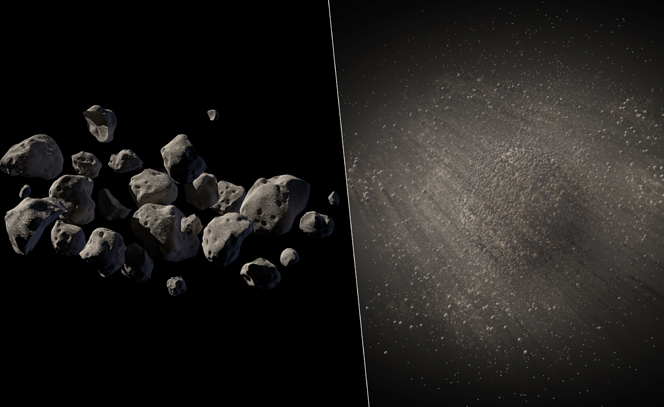What seemed to be rock-solid assumptions about the nature of small asteroids may end in collections of rubble or even a cloud of dust, but in such findings lies the lure of the unexpected.
Northern Arizona University researchers David Trilling and Michael Mommert, while playing a well-defined role in the NASA Asteroid Initiative, are beginning to wonder if they have found a separate path of investigation.
The two researchers presented their findings about asteroid 2011 MD on Thursday during a NASA event updating progress on the path to capturing a small asteroid and relocating it for a closer look by astronauts in the 2020s.
The job of Trilling and Mommert was to use the infrared capabilities of the Spitzer Space Telescope to determine the size of 2011 MD, which needs to be within a narrow range for the mission to succeed. Trilling, an associate professor, explained that using infrared light is the most accurate way to determine an asteroid’s size because visible light through a traditional telescope fails to distinguish a small, highly reflective asteroid from a large one with little reflectivity.
At around 6 meters in diameter, 2011 MD is just right. But that’s not the whole story.
“People have assumed that small asteroids are debris from collisions of larger asteroids, so those really small guys would be just single slabs of rock flying in space,” said Mommert, a post-doctoral researcher. “But we found that this one is 65 percent empty.”
The findings, which suggest a flying cluster of rocks or a cloud of dust with a solid rock at its nucleus, are similar to observations the NAU researchers published earlier this year of yet another asteroid, 2009 BD.
Trilling said long-held assumptions are yielding to something “weirder and more exotic. The first time you see it, you think, ‘Well, that’s just an anomaly.’ But two out of two, and you start to think that maybe the small ones really don’t look like everyone thought.”
The latest findings appear online today in Astrophysical Journal Letters, coinciding with the NASA presentation. And while NASA seeks to use the asteroid mission to test the technologies and capabilities needed to send astronauts to Mars, Trilling and Mommert are setting their sights elsewhere.
“Now we can go back and propose some more observation time just for the science investigation,” Trilling said. “Now we want to learn something more about the universe.”
Mommert said this is a prime opportunity to add data to a field—the study of small asteroids—that is sparsely populated.
“It’s a field that hasn’t been studied a lot because it’s really difficult to observe them and derive their physical properties,” he said. “The density of 99.9 percent of all asteroids is unknown.” He and Trilling have now added two to a single-digit list.
As far as 2011 MD is concerned, NASA will have to be satisfied with the information compiled by the full team, which includes NAU, the University of Hawaii and a number of other NASA and affiliated labs. The asteroid is about to disappear behind the sun, at least from Earth’s perspective, for the next seven years, and will not be observable again before the spacecraft to retrieve it would have to be launched.



